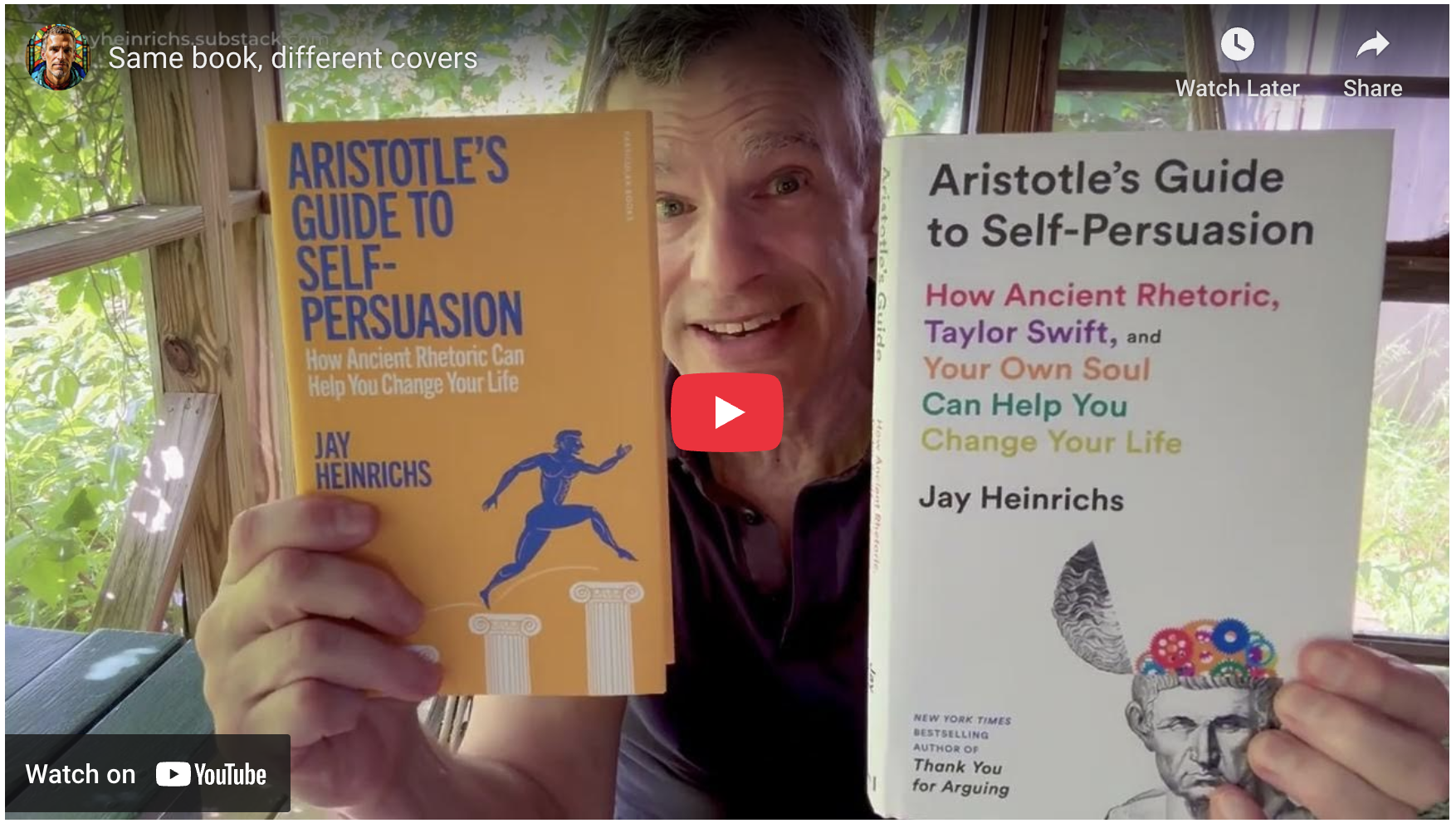Figures (and Tropes!)
They’re where the word magic happens.
Figures of speech use unusual words, or use words I unusual patterns. John F. Kennedy uses a chiasmus (ki-AZZ-muss), the crisscross figure, in his inaugural address:
Ask not what your country can do for you, ask what you can do for your country.
See what he did? (Actually, his speechwriter did it, but Kennedy said it.) He said a clause—Ask not what your country can do for you—then said the clause in reverse. The chiasmus is Jay’s favorite figure, because it lets you counter an opposing opinion for make a nice contrast. [link tk] Shakespeare has Richard II throw out a depressed old-man chiasmus:
I wasted time, and now doth time waste me.
If you don’t eat the shark, the shark will eat you. But let’s leave that poor shark alone and talk about figures in general. If you want to see a whole slew of figures used in politics and popular media, go to Jay’s goofy old website, Figarospeech.com.
Now, not all figures are figures of speech. Some are figures of thought—little rhetorical or persuasive tricks embedded sentences. Comparisons [link tk] are often figures of thought: “On the one hand…on the other hand…” A rhetorical question (“You going out dressed like that?”) is another figure of thought.
Meanwhile, look for poetic or just plain unusual language in anything you read or hear. Chances are pretty good you’re witnessing figurative language. Now impress your teacher or AP test grader by noting a prompt’s use of figurative language.
But be careful. Instead of a figure, you might be tripping over a trope. Unlike figures, tropes bend the mind, warping reality. The word comes from the Greek tropos, meaning “a turning.” (It’s also where “tropics” comes from—that part of the planet that turns toward the sun.) Rhetoricians list four main tropes. Jay adds a fourth.
Metaphor. It’s raining cats and dogs. The moon is a balloon. You’re not insane saying these things. You’re just pretending. The metaphor pretends that two things that share a characteristic (moon is round, balloon is round, both float up high) are the same thing. In fact, all tropes play pretend.
Irony. Here you pretend to be saying one thing while you mean something else. (“Oh, you shouldn’t have!”)
Synecdoche. A member or part of something pretends to be the whole, or the whole stands for a member. (“Your American intellectual is no intellectual at all.” “Dartmouth beat Harvard.”)
Metonymy. A container or characteristic pretends to be the whole thing. (“I met with the suits today.” “He’s been hitting the bottle.” “Care for a toot?”)
Hyperbole. Jay adds this one, because it pretends something is bigger or smaller than reality. The word comes from the Greek, meaning “to throw beyond.” (“I studied a million hours for that test.” “Their point guard is nine feet tall.”)
Often, tropes sound like figures. If instead of saying “early morning,” you hear “rosy-fingered dawn,” you’re hearing a form of personification—a kind of metaphor. That’s a trope. And the person using it is quoting Homer, so don’t hate him.
We could do a whole book’s worth here, just talking about figures and tropes. In fact, Jay did do a book. It’s called Word Hero. You can find the tools from that book on his website, wordhero.org.
Another great source for figures and trope—and for rhetoric in general, is this amazing website: Silva Rhetoricae, the Forest of Rhetoric. Honestly, you could lose yourself happily in this magical site, like an even nerdier version of Harry Potter. Or like Jay. You can’t get word-nerdier than that guy.
Contents



Civility isn’t the end of deliberative argument; it’s just the beginning. To get anyone even to listen to you, you have to make your audience believe you’re worth listening to.